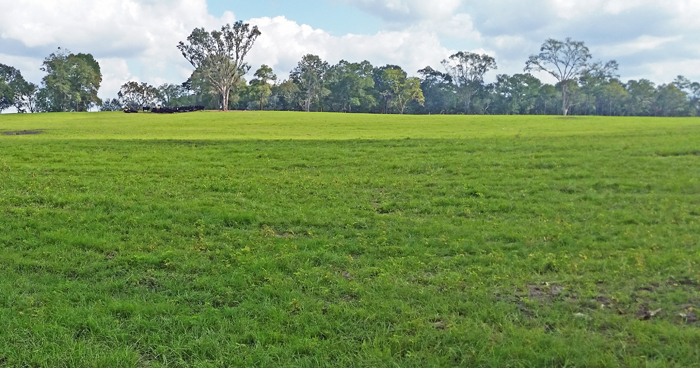In that recent flash of time when cattle prices were the highest in my lifetime, many Florida ranchers seized the opportunity to invest some increased income in capital improvements for the ranch. Some fertilized according to soil test for the first time in years, some replaced worn out equipment, and some took the opportunity to plant or renovate Bahiagrass pasture.
In that high market, ranchers may have thought, “Prices are good, I don’t have to worry so much about doing this exactly right.” Now that the good times seem as distant as civil political discussion, doing it right has renewed importance.
I’ve visited several recently renovated fields this year, and here are some of the shortcuts that have come back to bite the rancher.
• Failure to rid the new pasture of weed populations BEFORE planting.
This is particularly important when planting improved varieties in fields which have Pensacola Bahiagrass in them. Bahiagrass’s popularity stems from its persistence. There are no herbicides which can differentiate between Pensacola and its descendants, Tifton 9 and Riata. Moving from Pensacola to one of these varieties may require burning down existing Bahiagrass, and planting a winter feed crop such as oats or cereal rye before planting next year. This intermediate crop may need to be burned down again before planting to assure a clean field.
Wait until after your Bahiagrass is established to add legumes to the mix. If you use broadleaf herbicides for your Bahiagrass, you’ll lose your legumes. That’s another expense you can avoid.
• Planting too deep.
Bahiagrass should be planted only one quarter to one half inch deep. Planting into loose soil or improper drill settings can put the seed below that and decrease seedling vigor and germination. That’s another loss of time and money.
• Failure to use adequate seeding rates.
Recommended seeding rates for Tifton 9, Riata and TifQuik are 15 – 20 pounds per acre and 20 – 30 pounds for Argentine with the lower rates for drilled seed in prepared ground and the higher rates for broadcast applications. Cutting corners on seed rate leaves more open ground, which allows weeds to compete more effectively with Bahiagrass seedlings. A thick, vigorous stand reduces weed competition. Yes, seed is expensive, but if you can’t afford to do it right, can you really afford to do it over?
• Grazing the new crop too soon.
Bahiagrass persistence depends on having sufficient leaf area to sustain itself. Make sure the forage is fully established before grazing. It is possible to get grazing in the season of establishment, however your goal is to have pasture for many years. Jumping the gun can decrease the useful life of the pasture. The IFAS recommendation for minimum stubble height is three inches, if rotationally grazed, and five inches if continuously stocked. You may well be renovating your fields because you’ve overgrazed them in the past. Don’t throw good money after bad.
• Inadequate fertility
The IFAS publication, Bahiagrass (Paspalum notatum): Overview and Management, recommends “Light fertilization of Bahiagrass will generally be necessary within 7–10 days after seedling emergence. The initial application should consist of 30 lb nitrogen (N)/acre, all of the recommended P2O5, and 50% of the recommended K2O. Approximately 40–50 days after the initial application, an additional 50 lb of nitrogen and the remaining K2O should be applied.” Many renovations skip this step out of false economy. In addition, soil pH should be 5.5 before planting.
• No rain
Unless you’re planting under the “Silver Cloud” (irrigation), I can’t help you here. However, Bahiagrass seed can lie dormant for longer than you might think. One of my neighbors had seed in the ground 3 months before a decent rain got it going. Of course, “If it doesn’t rain, it doesn’t matter.”
Chris Prevatt’s market projections in his Panhandle Ag October 7th article show next year’s calf prices below breakeven prices and trending lower. Even though properly renovated pastures are a long term investment and may be more likely justified over time, this near term market downturn intensifies the urgency of ensuring the necessary care and attention be paid to getting everything right in your renovation project. There’s no room for error in this market.
Portions of this article were adapted from “Bahiagrass (Paspalum notatum): Overview and Management” and “The Management and Use of Bahiagrass”

